1. Cambodia, Laos and China
2. Invertebrates--no backbones
3. Charles (or Charlie) M. Russell
Good work!
All About Butterflies and Another Quiz with a Prize
Vu Van Lien is keeping track of what is happening to the butterflies in Tam Dao National Park because they are an indicator species, just like the macro invertebrates we studied in the fall.
The first two people to post correct answers to all three questions win a special prize. There are three questions, but the third one is down lower in this post.
Question one: what is an indicator species?
Question two: why should we study indicator species? In other words, what types of important information do we learn from what happens to them?
Here are some interesting facts I’ve learned about butterflies:
You can safely hold a butterfly or moth by gently holding its body right below the head—one finger on top, one on the bottom. See photo of this.
If you want to see a butterfly, look during the hours of 9 am to 4 pm when they are the most active. If you look carefully you will also see many small moths, which shows that not all moths fly at night.
Butterflies sleep in trees and love the sun.
Only four species of butterfly her in Tam Dao fly in the fog, which we’ve had every day.
Forest butterflies are darker than open field or lowland butterflies.
The butterfly’s antenna can sense mates and food plants.
Some caterpillars eat flowers rather than leaves.
In colder climates some butterflies and caterpillars can hibernate for up to a year in bark of a tree, branches, and even underground.
I had read this fact but was not sure it was true until Lien confirmed it—while in the chrysalis or cocoon, the caterpillar turns completely into liquid to reform into a butterfly. This is amazing to me!
Question number 3: Name one common butterfly in the Spokane area that is not a painted lady or a monarch. Make sure the spelling is correct. You may need to do some research—perhaps Dianne has a book in her library. I believe that I have a book of insects on the shelf near the classroom door and robin might have some books as well. As a last resort, with parent permission you could do an internet search at home using the key words Spokane butterfly local. If these words don’t help, you can ask your parents or Robin or Joy for other key words to search.

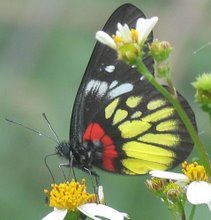
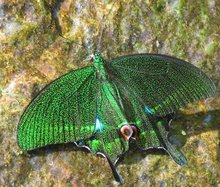

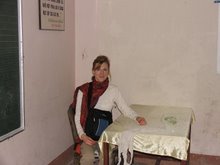
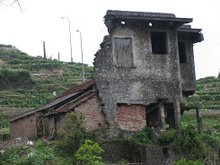
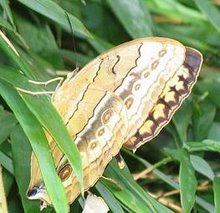

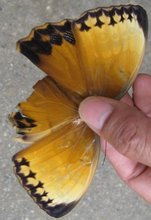
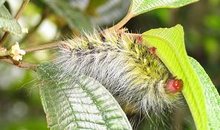
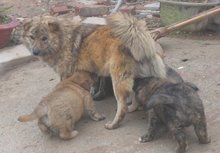





20 comments:
Question one: what is an indicator species?A type of animal that is starting to dissaper.
Question two: why should we study indicator species? In other words, what types of important information do we learn from what happens to them? We learn about the different types of them and see what they do and it's inportant reason why they are here and how to help them.
Spencer
Question one: what is an indicator species? Animals that are about to disaper.
Question two: why should we study indicator species? In other words, what types of important information do we learn from what happens to them? You should learn about indicator species because then you can learn to bring more back.
? #3. Tiger swallowtail
Jeremy
Anonymous said...
Question one: what is an indicator species?A type of animal that is starting to dissaper.
Question two: why should we study indicator species? In other words, what types of important information do we learn from what happens to them? We learn about the different types of them and see what they do and it's inportant reason why they are here and how to help them.
#3 Tiger Swallowtail.
Spencer
Question one: what is an indicator species?Bbutterflys
Question two: why should we study indicator species? In other words, what types of important information do we learn from what happens to them?the popalition of the bugs such as butterflys.
Here are some interesting facts I’ve learned about butterflies:
You can safely hold a butterfly or moth by gently holding its body right below the head—one finger on top, one on the bottom. See photo of this.
If you want to see a butterfly, look during the hours of 9 am to 4 pm when they are the most active. If you look carefully you will also see many small moths, which shows that not all moths fly at night.
Butterflies sleep in trees and love the sun.
Only four species of butterfly her in Tam Dao fly in the fog, which we’ve had every day.
Forest butterflies are darker than open field or lowland butterflies.
The butterfly’s antenna can sense mates and food plants.
Some caterpillars eat flowers rather than leaves.
In colder climates some butterflies and caterpillars can hibernate for up to a year in bark of a tree, branches, and even underground.
I had read this fact but was not sure it was true until Lien confirmed it—while in the chrysalis or cocoon, the caterpillar turns completely into liquid to reform into a butterfly. This is amazing to me!
Question number 3: Name one common butterfly in the Spokane area that is not a painted lady or a monarch.Tiger swallowtail
drew
Question one: what is an indicator species?
An indicator species is an animal or bug that is starting to dissaper.
Question two: why should we study indicator species? In other words, what types of important information do we learn from what happens to them?
We should study indacator butterflys because: It will help us know about animas more,and it will be a good experience for us.
Question number 3: Name one common butterfly in the Spokane area that is not a painted lady or a monarch.
One other common butterfly is a
Tiger Swallow Tail.
-Shafeen ,MISS YOU RACHEL!!!!!!!!!!
Question one: what is an indicator species?
an indicator specie is something that indicates if there is global warming.
Question two: why should we study indicator species? In other words, what types of important information do we learn from what happens to them? It is important to know if there is global warming because it can be very bad
jamie I will answer # 3 in the next blog
Question one: what is an indicator species? A type of animal that is about to dissaper
Question two: why should we study indicator species? In other words, what types of important information do we learn from what happens to them?We learn about diifrent kinds.
Question number 3: Name one common butterfly in the Spokane area that is not a painted lady or a monarch.
Tiger swollow tail.
top one mine
alexis
Question number 3: Name one common butterfly in the Spokane area that is not a painted lady or a monarch. tiger swallowtail
Jamie
Question one: what is an indicator species? An indicator species is a type of butterfly that indicates something. It is like that caterpillar that you posted a picture of. It was yellow, so it would irritate your skin. It is sort of like a symbol.
Question two: why should we study indicator species? In other words, what types of important information do we learn from what happens to them? If a butterfly is poisinous, you can tell people not to touch them.
Question number 3: Name one common butterfly in the Spokane area that is not a painted lady or a monarch. Another common butterfly is the Swallowtail.
-Sienna
Question one: what is an indicator species? A species who keeps track of anmals.
Question one: what is an indicator species? a kind of animal that tells you if they are populating or getting icstinct
Question two: why should we study indicator species? In other words, what types of important information do we learn from what happens to them? they are getting icstinct so we are wanting to make more.
Question one: what is an indicator species?
Butterflies
Question two: why should we study indicator species? In other words, what types of important information do we learn from what happens to them? It helps us know nature better.
Question number 3: Name one common butterfly in the Spokane area that is not a painted lady or a monarch.
Tiger Swallow
Daniel
Rachel i relly am eeeeeeeeeeeeeeeeeeeeeeeeeeeeeeeeeeeeeeeeeeeeeeeeeeeeeeeeeeeeeeeeeeeeeeeeeeeeeeeeeeeeeeeeeeeeeeeeeeeeeeeeeeeeeeeeeeeeeeeeeeeeeeeexxxxxxxxxxxxxxxxxxxxxxxxxxxxxxxxxxxxxiiiiiiiiiiiiiiiiiiiiiiiiiiiiiiiiiiiiiiiittttttttttttttttttttttttttttteeeeeeeeeeeeeeeeeeeeeeeeeeeeedddddddddddddddddddddddddddddd for the montana trip
Rachel-
our math is cool team got first place at masters!!!
Rachel thank you for going to Vietnam. I like the butterflies. I learned a lot from you. I was amazed of how big those buttterflies are. on that other web site that you click on the big piture of you there's a lot of pretty butterflies. Once again thank you for going to Vietnam and thank you for the gifts from Vietnam.
Daniel G.
1. Do you think that there are fewer behavior problems in Vietnamese schools than compared to United States schools, because of how teachers can punish students? Explain your answer.
Yes! I think that there is not very many behavior problems. Because the kids get hit, pinched, and get striked.
2. In United States public schools, poor children can get free or cheaper school lunches. The taxes your parents pay help pay for this program. But in Vietnam poor kids go home for lunch. Which system do you think is better? Do you think it is fair that the taxes your parents have to pay go toward paying for poor kids’ lunches? Explain your answer.
I think everybody should get free lunches or cheap lunches. I wouldn’t want to walk all the way home just to eat lunch. And I bet the people in Vietnam would rather not walk home then getting a free lunch or a cheap lunch also.
3. In the United States, schooling is free until grade 12, when you hopefully graduate and get your high school diploma. What if we had a system like Vietnam’s, where only up until grade 9 is it free. How would this change our world? How would things be different in the United States? Explain your answer.
I can’t wait to read what you write. Today I had duck eggs for breakfast
We would be more rich. The school would not have a lot of money. And the schools would not be as good.
Daniel
Question one: what is an indicator species? an indicator species is a speices that tells you that something is either right or wrong. Like that caterpillar that was in the picture with the yellow poison on it? It indicated that you can't touch it. There are some butterflies that indicate spring, summer, fall, and winter. They are their natural habitats
Question two: why should we study indicator species? In other words, what types of important information do we learn from what happens to them? You can learn what season it is so you don't have to lug along some huge heavy metal thing on a trip. Also because you can learn whitch ones are poisoned so nobody gets hurt.
Question number 3: Name one common butterfly in the Spokane area that is not a painted lady or a monarch.
A common butterfly that is not a painted lady or a monarch is a Swallowtail.
-Sienna
Rachel thanks for going to vietnam and bringing us back pitures.
Daniel
Question two: why should we study indicator species? In other words, what types of important information do we learn from what happens to them? We learn about the different types of them and see what they do and it's inportant reason why they are here and how to help them.Oh a dude cool!
Spencer
Post a Comment